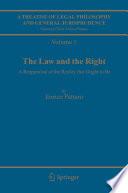
Teacher Education Through Open and Distance Learning
World review of distance education and open learning Volume 3
How can open and distance learning and information and communications technology (ICT) provide us with more - and better - teachers? Open and distance learning is increasingly used in teacher education in developing and developed countries. It has the potential to strengthen and expand the teaching profession of the twenty-first century and to help achieve the target of education for all by 2015. Teacher Education Through Open and Distance Learning examines the case for using open and distance learning and ICT to train our educators. It describes and analyses the ways in which these methods and technologies are used for: *initial teacher training and continuing professional development *training principals and school managers *training those who provide non-formal adult and community education *communities of practice and sharing of knowledge and ideas within the teaching profession It also discusses the policy-making, management, technology, costing, evaluation and quality assurance aspects of this work. The contributors are outstanding practitioners in the field. The first review in over a decade, Teacher Education Through Open and Distance Learning draws on wide-ranging and international experience to summarise the strengths and weaknesses of new approaches to the education of teachers. It offers invaluable guidance to policymakers, planners, headteachers and teachers.
- ISBN 13 : 1134202059
- ISBN 10 : 9781134202058
- Judul : Teacher Education Through Open and Distance Learning
- Sub Judul : World review of distance education and open learning Volume 3
- Pengarang : Bernadette Robinson, Colin Latchem, Colin Latchem, Colin Latchem, Colin Latchem, Colin Latchem, Colin Latchem, Colin Latchem, Colin Latchem, Colin Latchem, Colin Latchem, Colin Latchem, Colin Latchem, Colin Latchem, Colin Latchem, Colin Latchem, Colin Latchem, Colin Latchem, Colin Latchem, Colin Latchem, Colin Latchem, Colin Latchem, Colin Latchem, Colin Latchem, Colin Latchem, Colin Latchem, Colin Latchem, Colin Latchem, Colin Latchem, Colin Latchem, Colin Latchem, Colin Latchem, Colin Latchem, Colin Latchem, Colin Latchem, Colin Latchem,
- Kategori : Education
- Penerbit : Routledge
- Bahasa : en
- Tahun : 2004
- Halaman : 272
- Google Book : https://play.google.com/store/books/details?id=dKR-AgAAQBAJ&source=gbs_api
-
Ketersediaan :
It describes and analyses the ways in which these methods and technologies are used for: *initial teacher training and continuing professional development *training principals and school managers *training those who provide non-formal adult ...




